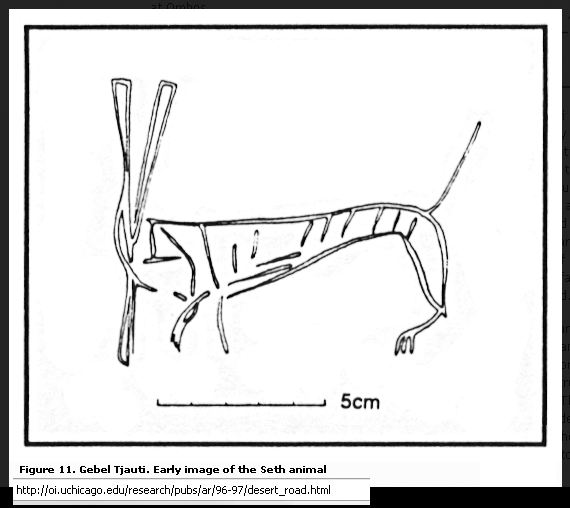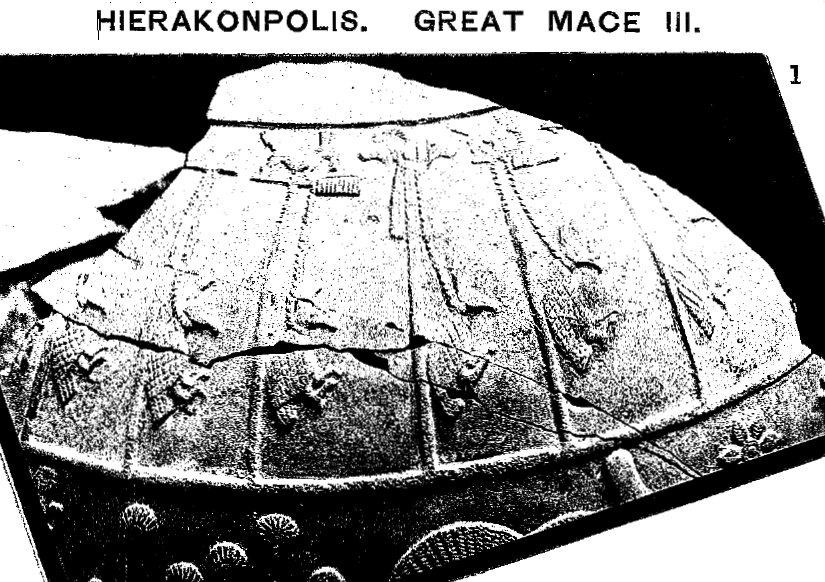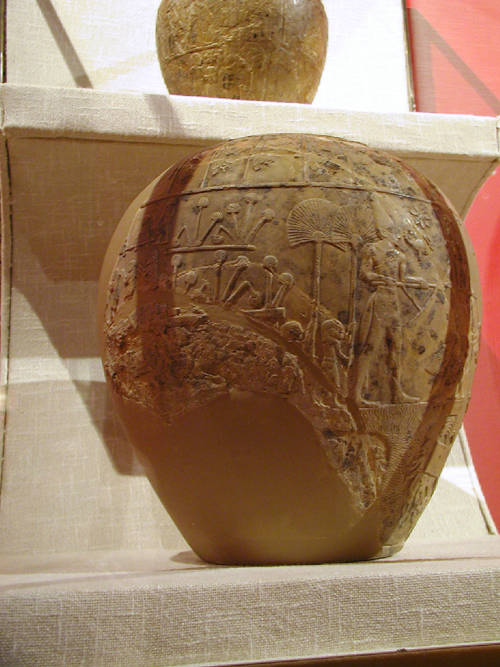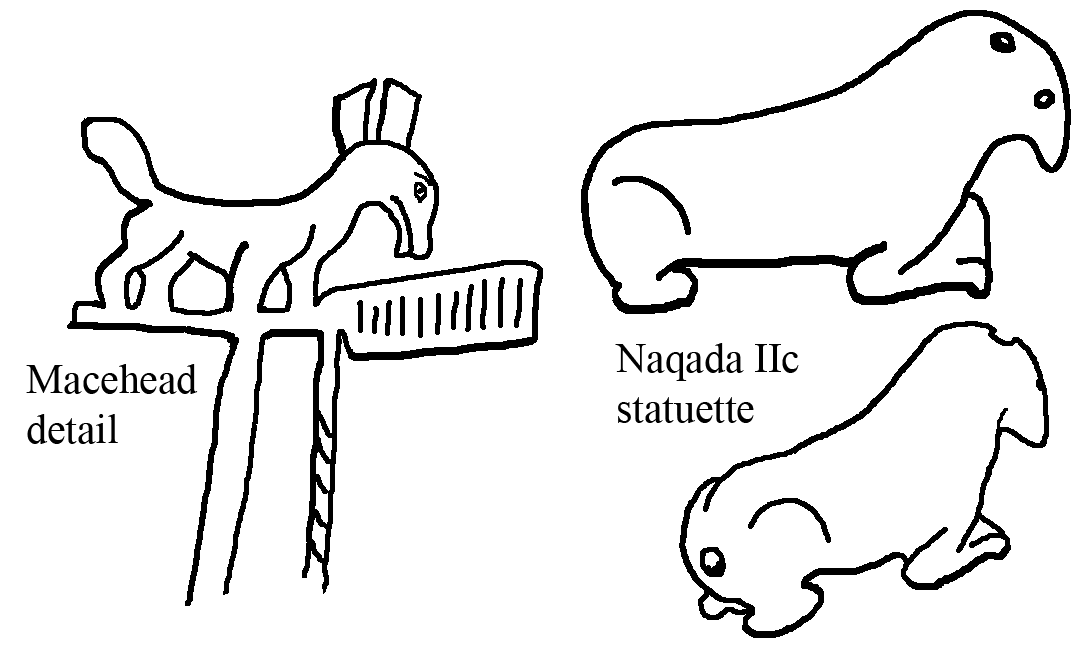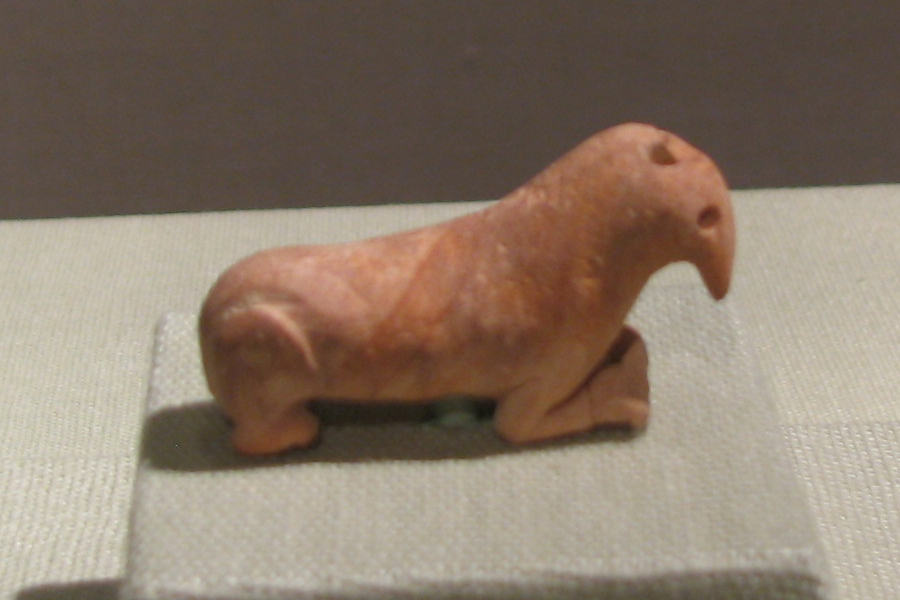"The Seth-animal has been connected with the ass, oryx antelope,
greyhound, fennec, jerboa, camel, okapi, long-snouted mouse,
aardvark or orycteropus, giraffe and a kind of hog or boar. A. S.
Jensen 2) drew attention to the fact that it has also been regarded
as a hare, jackal, tapir, long-snouted mormyr of the Nile or the nh
bird of the Egyptians." _Seth, God of Confusion_, TeVelde, page 13
Predynastic images are often very hard for us to identify as representing Set. Possibly, it took a while for the ancients to come up with the standard Set look that we know and love. And there is a classic canine body in most of the Dynastic imagery.
Furthermore, Ken Moss advances the idea that the Saluki is the prototype for the Set animal in the August/September 2009 issue of _Ancient Egypt_. "These oldest representations of the Seth-animal are clearly of a dog, but with two unique features: an erect tail and erect squared-off ears. The body of the Seth-animal has in fact always been that of a canine, with paws, and even the head was dog-like in the beginning. It was only over time that the head became exaggerated with a long, narrow, down-turned snout." (Page 43)
Meanwhile, back to the huge number of associations that have on occasion been associated with Set. The antelope is among them, and this comb fragment from Naqada I looks quite a bit like the illustrations given in TeVelde's book:

Bone Comb with an Antelope
Naqada I -early Naqada II (ca. 3900-3500 B.c.)
Metropolitan Museum, Rogers Fund, 1923, MMA 23.2.8

This comb at the Ashmolean (courtesy Jon Bodsworth's now defunct "egyptarchive.co.uk")looks exactly like one in TeVelde's illustration:
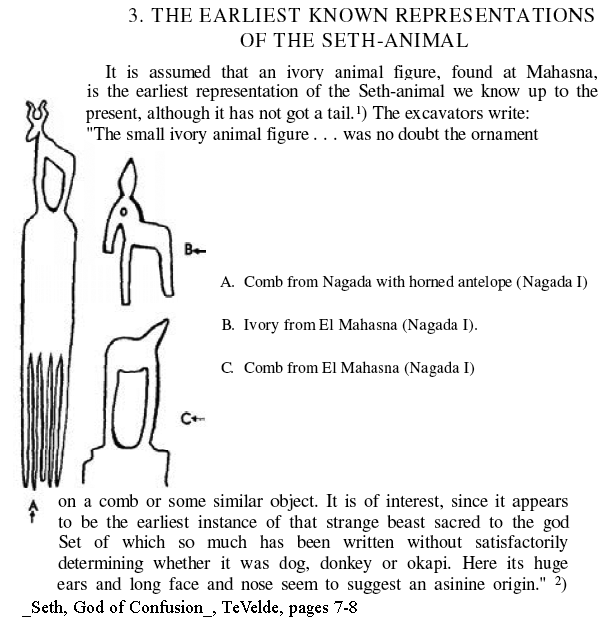
Here are some more early examples for us to consider:
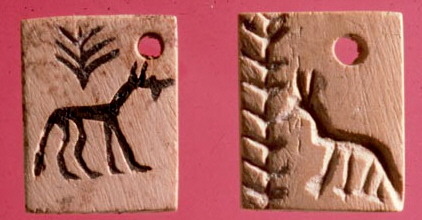
Several years ago, I thought they might possibly represent Set, because of the sedge hieroglyph in the one label:

